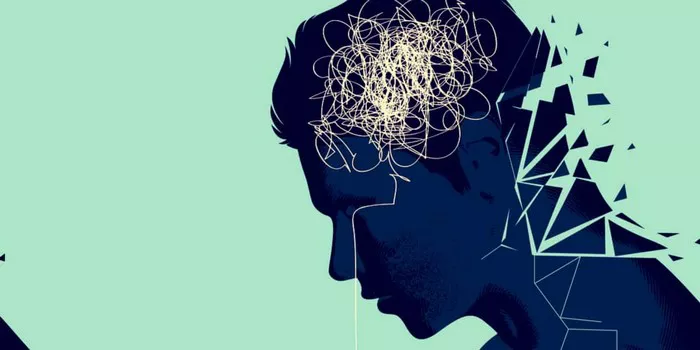Why does sadness peak at night? This intriguing question has puzzled psychologists, researchers, and individuals grappling with their emotions for decades. As the sun sets and darkness envelops the world, a peculiar phenomenon unfolds – an upsurge in feelings of sadness, loneliness, and melancholy. While the answer is not a one-size-fits-all solution, delving into the realms of psychology, biology, and circadian rhythms can provide valuable insights into this nocturnal emotional shift.
See Also:Why Do People Experience Feeling Sad at Night?
1. The Circadian Influence on Emotions
Our bodies operate on a circadian rhythm, a 24-hour cycle that regulates various physiological and behavioral processes. This internal clock, largely influenced by light and darkness, plays a pivotal role in mood regulation. As the evening descends and natural light diminishes, the circadian system signals the release of melatonin, the hormone responsible for promoting sleep. Simultaneously, the decrease in serotonin, a neurotransmitter associated with happiness, may contribute to the rise in sadness during the night.
2. Reflection and Introspection
Nighttime often offers solitude and tranquility, creating an environment conducive to introspection. In the silence of the night, individuals may find themselves confronting their thoughts and emotions more intensely. The absence of distractions allows for a deeper exploration of one’s inner world, potentially amplifying pre-existing feelings of sadness or unresolved issues that tend to surface when the mind is unoccupied.
3. Loneliness in the Dark
The night can magnify feelings of loneliness, particularly for those who live alone or lack social interaction during evening hours. The absence of daytime activities and social engagements may intensify the sense of isolation, making individuals more susceptible to the pangs of sadness as the night progresses.
4. The Influence of Sleep Quality
The relationship between sleep and emotions is intricate. Poor sleep quality or insomnia can exacerbate feelings of sadness and emotional distress. Nighttime, when individuals attempt to unwind and relax, may highlight the impact of insufficient or disrupted sleep on emotional well-being, contributing to the perception that sadness peaks during these hours.
5. Unresolved Stress and Evening Release
Throughout the day, individuals often cope with stressors and challenges, pushing aside emotional responses to fulfill daily responsibilities. As night falls and the demands of the day diminish, the mind may finally find the opportunity to address and process unresolved stress, leading to an apparent peak in sadness as the accumulated emotional tension is released.
6. Hormonal Fluctuations
Hormones play a crucial role in regulating mood, and their fluctuations throughout the day can influence emotional states. For some, the evening marks a time when cortisol levels, associated with stress, begin to decline. This hormonal shift may unmask underlying feelings of sadness that were suppressed during the day, contributing to the perception of heightened emotional distress at night.
7. Social Comparison in the Age of Connectivity
In an era of constant connectivity, social media can contribute to nighttime sadness. As people wind down and scroll through their social feeds, they may encounter curated glimpses into the lives of others. The pervasive nature of social comparison, especially during the quieter hours of the night, can evoke feelings of inadequacy, loneliness, and sadness.
8. Dreams and Nightmares
The dream landscape can be a powerful influencer of emotions. Nighttime sadness may stem from vivid dreams or nightmares that elicit strong emotional responses. The boundary between dreams and reality blurs during sleep, and intense or unsettling dream experiences can linger into waking hours, impacting an individual’s emotional state.
9. Seasonal Affective Disorder (SAD)
For some individuals, nighttime sadness may be linked to Seasonal Affective Disorder, a type of depression that occurs at specific times of the year, often during the fall and winter months. The reduction in natural sunlight exposure during these seasons can disrupt circadian rhythms and lead to an increase in depressive symptoms during the night.
10. Coping Mechanisms and Midnight Blues
Nighttime may be a vulnerable period for individuals lacking effective coping mechanisms. As the day winds down, the absence of active engagement may prompt individuals to confront their emotional struggles directly. Without healthy coping strategies, the nighttime blues may become more pronounced, highlighting the importance of developing adaptive ways to navigate and manage emotional challenges during these hours.
Conclusion: Navigating the Emotional Landscape of the Night
While the question “Why does sadness peak at night?” doesn’t have a singular answer, the interplay of circadian rhythms, psychological factors, and individual experiences sheds light on this nocturnal enigma. Understanding the complexities of nighttime emotions can empower individuals to implement strategies for emotional well-being, whether through improving sleep hygiene, fostering social connections, or developing effective coping mechanisms to navigate the emotional landscape of the night.
Related Topics:
What Does Undiagnosed Bipolar Look Like in Adults?
What Is a Good Mild Depression Medication?
What Is the Clinical Depression Symptoms in Elderly?


